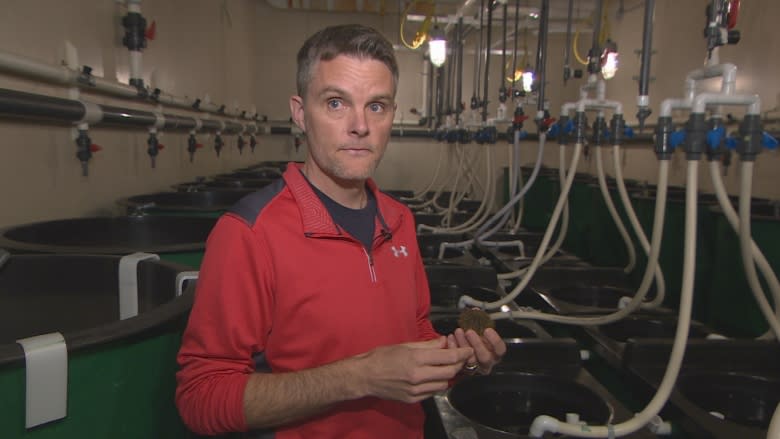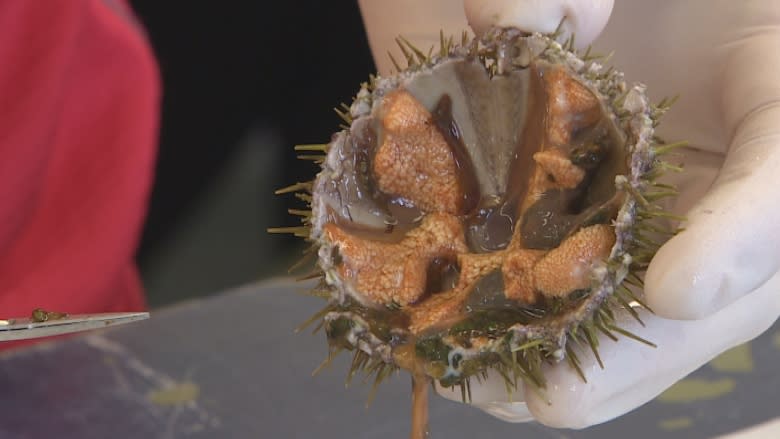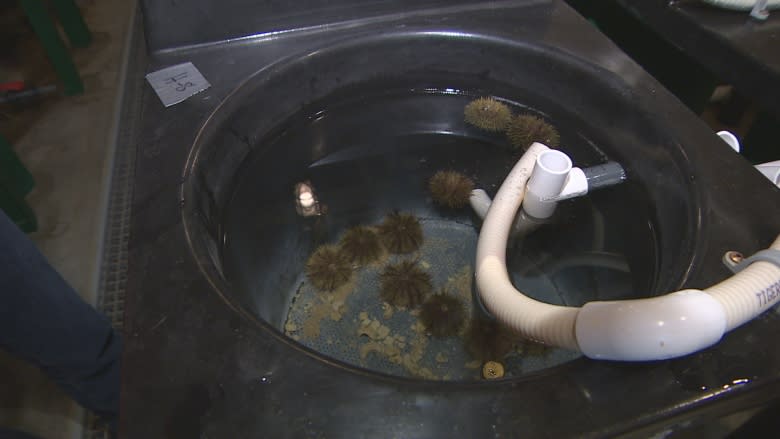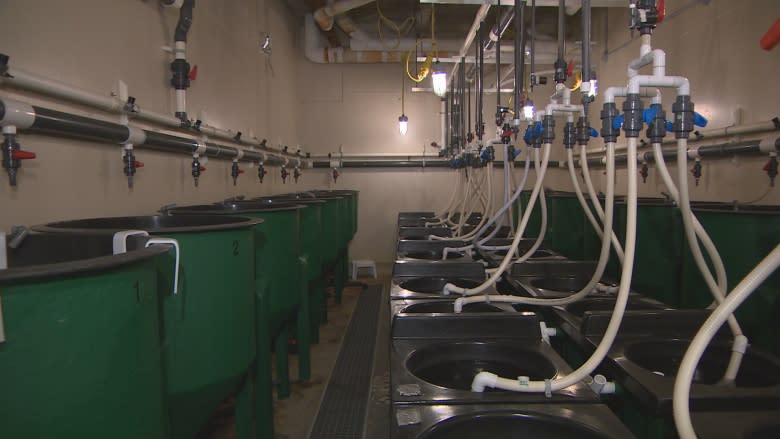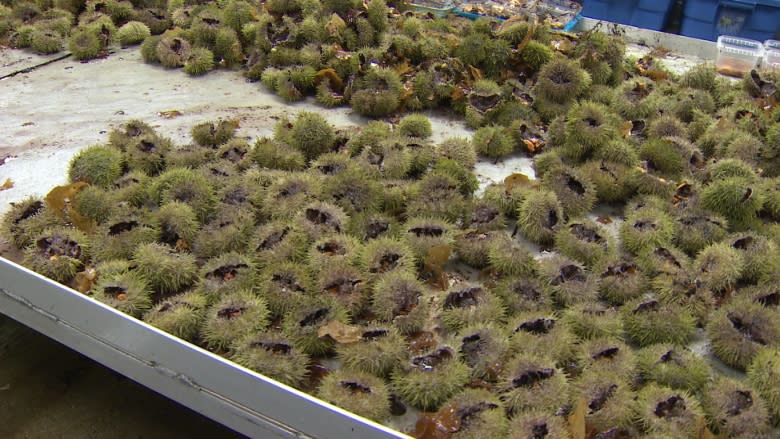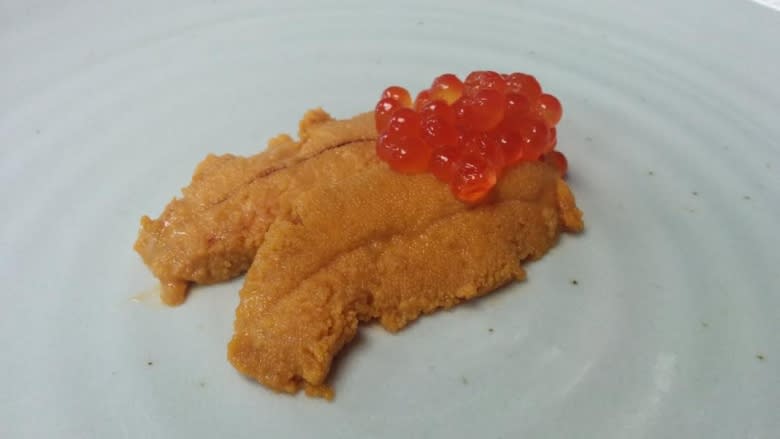They're green and spiky and could be 'mine of gold' for Newfoundland aquaculture
A researcher from Memorial University says a pilot project designed to boost the quality and quantity of the edible part of the sea urchin could lead to land-based farming of the sea creature in Newfoundland and Labrador.
It's commonly called the roe, or uni on the menu at a sushi restaurant, but what you're actually eating is the reproductive organs of the sea urchin.
"That is the organ that is actually consumed. People call it roe, biologists call it gonads," said Patrick Gagnon, a professor in the ocean sciences department at MUN.
While the taste is difficult to describe — a creamy custard-like texture combined with the briny taste of the ocean — the delicacy is in steady demand in parts of Asia.
Gagnon is testing the efficiency of a feed formulated to enhance the quality and quantity of sea urchin gonads at the Ocean Sciences Centre in Logy Bay.
"The feed is specifically designed to optimize the colour, texture and taste of the gonad to meet exactly what they're looking for in the Asian market," said Gagnon.
Urchins in Gagnon's study are exposed to three different temperature regimes to see how gonad production is affected.
"The hypothesis is the warmer the water the more efficient the feed will be."
The first step of Gagnon's research is to assess the performance of the feed on gonad production.
If it's successful, the focus will then move to the feasibility of using the feed on a commercial scale, to bring urchins grown in Newfoundland to the Asian market.
Potential for big profits
"We've had examples in the past where a kilogram of gonads from the green sea urchin could easily get $129 per kilogram, so that's potentially lots of money that can be produced," said Gagnon.
"So that's our top target."
The feed has been tested in Norway, Australia and Japan, and has been shown to substantially increase the gonad index over the course of 12 weeks, although not in the same species as those found in Newfoundland.
Gagnon and his team have just completed a four-week trial at the Dr. Joe Brown Aquatic Research Building in Logy Bay with "promising" results.
"Potentially that means if we can successfully fatten the urchins in terms of their gonads with that feed, we could potentially use the concept and export it to rural regions."
Quality control
There is currently a small-scale urchin fishery in Newfoundland. However, there is no way to determine the quality or quantity of the gonads before they're sent to market.
"Right now there's a few companies that exploit urchins in natural habitats. They collect urchins from specific locations on the sea floor and they send them to Maine for processing."
Gagnon's focus is not only on farming the urchins here, but cutting out the middle-man as well.
"Newfoundland is kind of sitting on a mine of gold, because that resource could be sent directly to the Asian market, as opposed to Maine for a lower price."
"So that's also one of the goals of our group later down the road, is to see if we could bypass any intermediate people in the export chain and just send it ourselves to the Asian markets."
Growing the appetite for gonads
Asia is not the only potential destination for sea urchin gonads.
Gagnon said there is a market in both Montreal and Toronto, and with a little exposure, the industry has a lot of potential to grow.
"I thinks it's a question of culture as well. I mean if you can try to promote urchin gonads, maybe people would start to eat them more if they had the opportunity to taste it."

